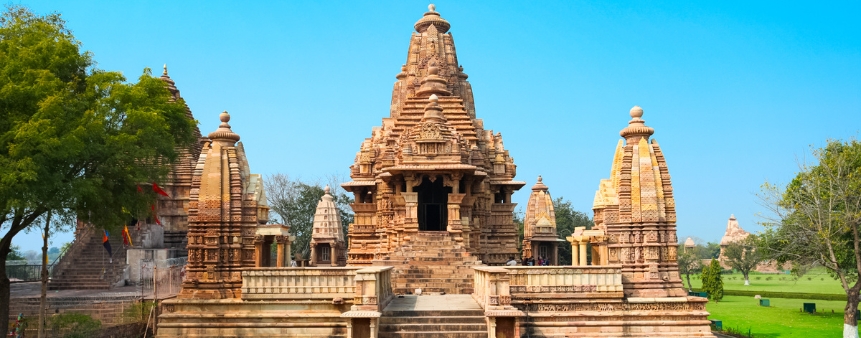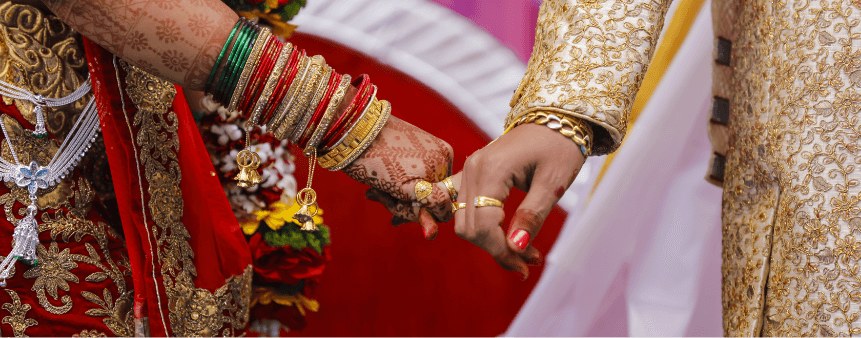Talk to India's best Astrologers
First Consultation at ₹1 only
Login
Enter your mobile number
Kundrathur Murugan Temple is believed to have been built over 1,000 years ago and is considered one of the ancient Murugan temples in the region. Built around the Dravidian style of architecture with a multi-tiered gopuram (tower), the temple rises to a height of around 50 feet. The temple complex houses several shrines dedicated to various deities, including Lord Murugan, Lord Ganesha, Lord Shiva, and Goddess Durga. A unique aspect of the temple is the 100-pillar hall, which is said to have been built in the 9th century. The temple is famous for its annual Thaipusam festival, where thousands of devotees gather to offer prayers and seek blessings from Lord Murugan. The temple is also known for its spectacular mandapams (halls) and it's peaceful surroundings, which provide a calm and serene atmosphere for visitors. The temple has a large tank, known as the 'Sri Saravana Poigai,'' which is considered sacred and is used for rituals and ablutions. The temple is surrounded by lush green trees and has a park, making it a popular destination for families and tourists alike. The temple has a rich cultural heritage and is an important centre of Hindu worship, attracting devotees from all over India and abroad.
Let's take a tour of this beauty from the start!
The history of Kundrathur Murugan Temple dates back over a thousand years. The temple's exact origin is still being determined, but it is believed to have been built during the Chola dynasty (9th to 13th centuries).
The temple has a rich cultural heritage and has been a centre of Hindu worship for centuries. However, during the British colonial period, the temple was neglected and fell into disrepair. In the early 20th century, it was restored and renovated by local devotees, and since then, it has become one of the most critical Murugan temples in the region.
The temple has undergone several renovations and additions over the years. Today, it boasts several impressive structures, including the multi-tiered gopuram (tower), the 100-pillar hall, and the sacred tank known as the 'Sri Saravana Poigai.'
Despite its long history and the many changes it has undergone over the years, Kundrathur Murugan Temple remains an important centre of Hindu worship and a source of spiritual inspiration for devotees from all over India and abroad.
The Kundrathur Temple is considered a significant religious and cultural site for several reasons:
Overall, the Kundrathur Murugan Temple is one of the most popular sites of Hindu worship and a symbol of the rich cultural heritage of the region. It holds great significance for devotees of Lord Murugan.
Vaikasi Vishakam

A historic celebration called Vaikasi Vishakam is held at the Kundrathur Murugan Temple in Chennai, India, in honour of Lord Murugan, the Hindu deity of war. The celebration is held in the Tamil month of Vaikasi, equivalent to May or June in the English calendar.
The festival is celebrated for ten days, during which devotees participate in various rituals and ceremonies to please Lord Murugan. Some significant traditions include hoisting the sacred flag, the abhishekam (bathing) of the deity, and singing devotional hymns. In addition, the temple is decorated with colourful lights and flowers, and devotees offer fruits and milk to the deity.
One of the most beautiful aspects of the festival is the chariot procession, in which the deity is taken around the streets in a decorated chariot, accompanied by devotees singing and dancing. This procession is a grand event and attracts a large number of people.
In addition to its religious significance, the festival serves as a platform for social interaction and communal cohesion. People attend cultural events, including music and dance performances, and pay visits to friends and family.
In conclusion, Vaikasi Vishakam is an important festival that celebrates the glory of Lord Murugan and brings people together in devotion and celebration. It is an event for spiritual renewal and cultural enrichment and is a testament to India's rich religious and cultural heritage.
Skanda Sashti
Skanda Sashti, a significant Hindu festival honouring Lord Murugan, the Hindu God of War, is observed in Chennai, India at the Kundrathur Murugan Temple. The celebration occurs in Tamil's Aippasi month, which is equivalent to English months of October or November.
The festival is celebrated for six days, during which devotees participate in various rituals and ceremonies to please Lord Murugan. Some significant traditions include fasting, offering prayers and flowers, and reciting devotional hymns have been drawn out from the kundrathur murugan temple history. In addition, the temple is decorated with colourful lights and flowers, and devotees offer fruits and milk to the deity.
One of the festival's highlights is the Kanda Sashti Kavacham, a devotional hymn recited by devotees seeking the blessings of Lord Murugan. The melody is believed to have the power to grant protection and prosperity to those who recite it with devotion.
Another significant event during the festival is the Vilvaarchanai, where devotees offer the sacred vilva leaves to Lord Murugan, symbolizing their devotion and seeking his blessings.
Thirukarthikai
Thirukarthikai is one of the most significant Hindu festival celebrated in honour of Lord Murugan, the god of war, youth, and victory.
The festival takes place on the full moon day of the Tamil month of Kartikai, which falls in November or December. On this day, devotees gather at the temple to offer prayers and participate in various rituals and ceremonies. The highlight of the festival is the lighting of the temple, which is beautifully decorated with oil lamps and flowers. In addition, the temple premises are filled with the sound of devotional songs and the aroma of incense, creating a spiritual ambience.
Another significant aspect of the Thirukarthikai festival is the distribution of a special sweet dish called 'panchamirtham', made from ripe bananas, honey, jaggery, and other ingredients. Devotees offer this sweet dish to Lord Murugan as prasad and believe it brings good luck and prosperity.
The festival also features a procession of Lord Murugan's idol through the streets, accompanied by music, dance, and chanting. Devotees carry kavadi, a decorated wooden arch, and offer prayers to Lord Murugan as they walk.
The Tamil and English New Year
The Tamil and English New Year is celebrated in January and is an important event at the Kundrathur Murugan Temple in Chennai, India. The festival is a time for people to come together and celebrate the arrival of the new year with joy and happiness.
The temple is decorated with lights and flowers, and devotees offer prayers to Lord Murugan, seeking his blessings for the new year. In addition, people participate in various rituals and ceremonies, such as fasting and reciting devotional hymns, to seek the deity's blessings. The kundrathur murugan temple benefits from the revenue generated from the tourists during this time of the year.
Apart from the religious aspects, the festival is also a time for social gatherings and community bonding. People visit their friends and relatives and participate in cultural programs such as music and dance performances. In addition, the festival is a time for people to come together and celebrate the arrival of the new year with joy and happiness.
Thai Poosam
The Thai Poosam festival takes place in the Tamil month of Thai, corresponding to the English months of January-February.
The festival is celebrated for three days, during which devotees participate in various rituals and ceremonies to please Lord Murugan. Some significant traditions include fasting, offering prayers and flowers, and reciting devotional hymns. In addition, the temple is decorated with colourful lights and flowers, and devotees offer fruits and milk to the deity.
The Kavadi Attam, a devotional dance is performed by devotees as a form of worship. The dance is performed while carrying a Kavadi, a decorated arch-like structure, as a symbol of their devotion to Lord Murugan.
Another significant event during the festival is the Thirukalyanam, where the deity is dressed in elaborate attire and worshipped in a grand procession.
Thai Pongal
Thai Pongal is a Hindu festival celebrated in the Tamil month of Thai, corresponding to the English month of January. It is a harvest festival that marks the end of the winter solstice and the beginning of the sun's journey towards the northern hemisphere. The festival is celebrated to give thanks to the Sun God, Lord Surya, for providing warmth and life to the crops and the earth.
The festival is celebrated over four days, each with a specific significance. The first day is called Bhogi Pongal, dedicated to Lord Indra, the God of Rains, and is a time to clean and purify the home. The second day is Surya Pongal, dedicated to Lord Surya, and is celebrated by boiling milk in a new clay pot and offering it to the Sun God along with rice, sweets, and flowers. The third day is Maattu Pongal, dedicated to the cows and bulls who play a significant role in agriculture and is a time to honour and show gratitude to them. The fourth day is Kaanum Pongal, a day for families to gather together, visit friends and relatives, and participate in cultural activities such as music and dance performances.
In conclusion, Thai Pongal is an important festival that celebrates the Sun God's blessings and the harvest's bounty. It is a time for people to come together and give thanks for the blessings they have received, and it is a time for spiritual renewal and cultural enrichment.
Thai Krithigai and Panguni Uthiram in March-April
Thai Krithigai is celebrated on the full moon day of the Tamil month of Thai, and marks the beginning of the temple festival season. The festival is celebrated with prayers, fasting, and offerings of fruits and sweets to Lord Murugan. Many devotees participate in the traditional Kavadi Attam, a devotional dance performed while carrying a Kavadi, a decorated arch-like structure, as a symbol of their devotion to Lord Murugan.
Panguni Uthiram, on the other hand, is celebrated on the night of a full according to the Tamil month of Panguni, and is considered to be the most vital festival dedicated to Lord Murugan. The festival is celebrated with prayers, offerings of flowers, fruits, and sweets, and the recitation of devotional hymns. A grand procession of the deity is taken out, and the deity is worshipped with elaborate rituals and ceremonies.
